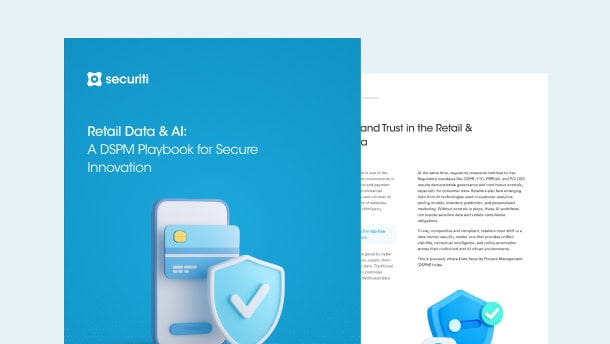On March 2, 2023, the Biden-Harris administration announced its National Cybersecurity Strategy1 to secure the full benefits of a safe and secure digital ecosystem for all Americans. While the focus of this strategy is US-centric, the need, application, and benefits of such a comprehensive plan are felt globally. It’s no surprise that Zero Trust (ZT), specifically Zero Trust Data Security, is a critical component of this strategy, as data is the most critical digital asset that must be secured with full force.
Despite the increasing popularity of Zero Trust security in cybersecurity circles, it's still a confusing concept for most security professionals. A 2022 survey of IT and cybersecurity decision-makers reveals that only one-third (35%) are confident in their understanding of the Zero Trust framework and controls2. By understanding the history of Zero Trust security, what it means, and how it applies to data security, organizations can learn how to apply these foundational elements to protect its most sensitive assets.
What is Zero Trust Security? Brief History and Basics
The key goal of Zero Trust security is to prevent data breaches and limit the lateral movement of users across the network. The term “Zero Trust” was first coined by John Kindervag while at Forrester and gained popularity as organizations recognized the inadequacy of traditional perimeter-based security approach in protecting their digital infrastructure.
Historically, organizations have focused security efforts on the network-perimeter boundary, using firewalls to block malicious traffic and authenticating users before giving them access to resources within the network. This approach has limitations as it gives attackers unhindered access to resources once they break into the network. Moreover, with modern enterprises hosting applications and data in multiple clouds and employees working remotely, defining a network boundary becomes increasingly challenging, which makes perimeter security ineffective.
Zero Trust: Core Principles And The Airport Security Analogy
Zero Trust security has three fundamental principles -
- Never trust, always verify: An entity requesting access to a resource should never be trusted based on its location on the network. Every request should be authenticated and verified, including those coming from within the corporate network. Also, trust should be granted per transaction and never considered permanent.
- Grant Least-privileges: Access to resources should be minimized by limiting permissions to what is needed to perform a transaction. Subsequent requests should be re-verified and re-authenticated and treated as new transactions.
- Assume attack: Organizations should presume that an attacker is always on the network. Multiple layers of defense should be implemented to catch an attacker that manages to breach one of those layers.
Consider an airport security analogy. All the passengers, irrespective of their citizenship and visa status, undergo the same security checks, including identity verification and baggage scan, to gain access to boarding gates. If a passenger accidentally exits the security checkpoint, it goes through the entire security process again. This is equivalent to “never trust, always verify”. A passenger who is allowed beyond the checkpoint can only access the shops at that terminal and board the plane for the ticket purchased. This is equivalent to granting least-privileged access. Once inside the security checkpoint, the movements of all passengers are continuously monitored for suspicious activity through CCTV cameras, and the boarding pass is verified again before a passenger is allowed to board. This is equivalent to assuming an attack.
Zero Trust security is not a single technique or a product but a set of guiding principles to help an organization protect its assets. Even if an organization has not formally kicked off a Zero Trust implementation, it may already have basic elements of Zero Trust embedded in its current security architecture. Transitioning to Zero Trust is an incremental journey in which organizations should start with small projects and gradually add new layers of defense over time to strengthen Zero Trust security and block attackers without disrupting business.
Applying Zero Trust Security To Data Assets and Elements
Usually organizations anchor their Zero Trust security architecture on an Identity or a network segmentation approach, starting with their Identity and Access Management (IAM) and network security solutions of choice to set up a mechanism for authenticating and verifying incoming access requests. Common to all approaches is a policy decision and enforcement engine that uses various signals as inputs to a trust algorithm to grant, deny, or revoke access to a resource.















































